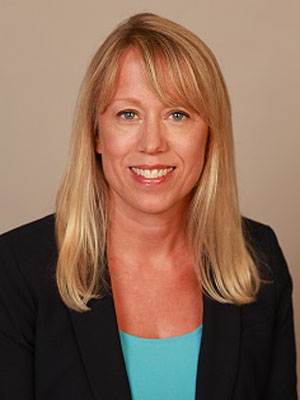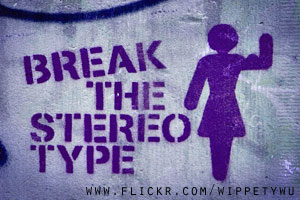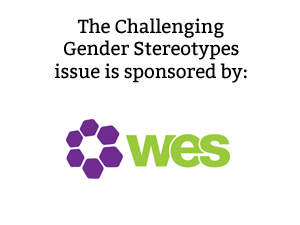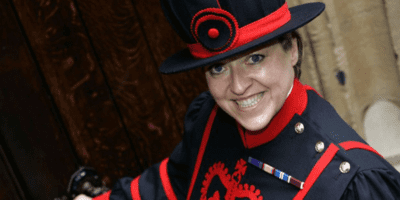Allyson Zimmermann is Executive Director at Catalyst Europe, where she works with leading global organisations, developing and supporting Catalyst members in advancing their diversity and inclusion initiatives to make positive change for women in the workplace. As a citizen of the US and Switzerland, she currently resides in Zurich, previously having lived and worked in five other countries. Allyson holds a B.A. in Communications and German from the University of Minnesota and outside of her role at Catalyst she is a professional coach.

“…Empirical evidence does not indicate many gender differences in leadership. In fact, these stereotypic perceptions misrepresent both women’s and men’s leadership…”
The top of the house is not about having the best talent … yet
Recently, I’ve been fielding questions about merit at several meetings with senior executives. The conversations usually go something like this: “Yes, we want more women, but we also want to focus on the best talent”.

To quote, Tom Falk, Chairman and CEO of Kimberly Clark: “For me, it became about more than fairness and achieving the ‘right’ numbers; it was about getting the best talent. Women are half the available people on the planet, so if we weren’t attractive to the talent in that group, then we weren’t the best.”
Striving for meritocracy when reality is far from aspiration
While meritocracy is what we all strive for, the reality is far from the aspiration. And therein lies the challenge most people in this field have to tackle. It is the underlying belief or stereotype that women being given senior roles are somehow less qualified or competent. Nothing could be further from the truth. It’s is not an issue of women being qualified, but rather an issue of demand for female talent. There are enough qualified women out there, but are they being held up to unsubstantiated stereotypes or beliefs of how women lead?
Senior women leaders across Western Europe report that gender stereotyping is an important barrier in their advancement to the top levels of a corporation, but why should stereotyping have such a negative effect?
‘Taking charge’ versus ‘taking care’

Empirical evidence does not indicate many gender differences in leadership. In fact, these stereotypic perceptions misrepresent both women’s and men’s leadership.
What’s maternal status got to do with it?
A maternal, nurturing image of women leaders is also carried over into the media. “Mother-of-four, 47, who says having a family is the best decision she’s made,” begins the Daily Mail headline in a story on Emma Walmsley’s appointment as the new CEO of GlaxoSmithKline. One wonders if it would be deemed necessary to include the paternal status of a male business leader? In another report, Ms. Walmsley is described as “ruthlessly ambitious.” Are men called this? Maybe so, but we know that some traits, such as ambition or self-confidence are often admired in men, but not so much in women.
Unfortunately, leadership traits perceived as feminine are also seen as less vital to leadership – a situation that can result in women being evaluated less positively than men for leadership positions. Surprisingly, a subsequent European study found that these perceptions were more pervasive in countries with higher levels of gender equality.
The dangers of underestimating the impact of stereotypes
Despite best intentions, organisations frequently underestimate the impact of stereotypes. This ‘blind spot’ is also the likely explanation for why many business leaders insist that there are sharp differences between women and men leaders in their organisations – even when evidence suggests otherwise. These stereotypes create false truths and can have a big impact on a woman’s advancement in a company.

In another study, we found further evidence that hidden biases are often reflected in organisations’ talent management systems leading to (unconscious) biased decision making.
What you HAVE is what you GET
This means those at the top of a company, who are predominantly men, will influence how the organisation manages its talent pipeline so that those being promoted will often mirror the traits and biases of top leaders—a vicious cycle in which men continue to dominate executive positions. The “think-manager-think-male” perspective becomes the standard employees expect, and what you HAVE is what you GET (WYHIWYG).
In a climate where global competition is keen and leadership talent is both critical and scarce, organisations cannot afford to overlook any of the leadership talents that women embody.
We need organisations to disrupt their own default on how they define an effective leader to ensure women are able to achieve their full potential. If WYHIWYG were a thing of the past; if an organisation’s performance management systems were bias-free; if they reflected attributes, characteristics, and behaviours of ALL talent – women AND men – then the workplace would truly be inclusive.
https://twitter.com/catalystinc
https://twitter.com/allyzimmermann
https://www.youtube.com/user/CatalystClips






